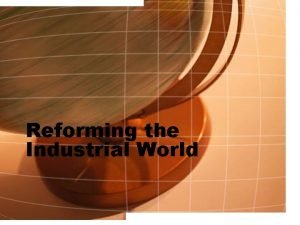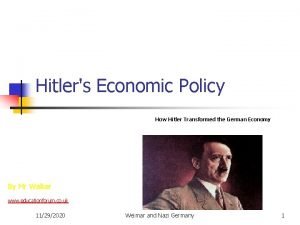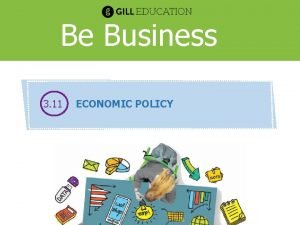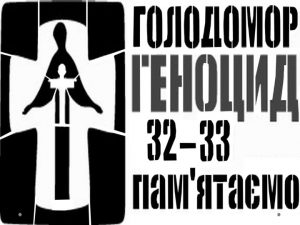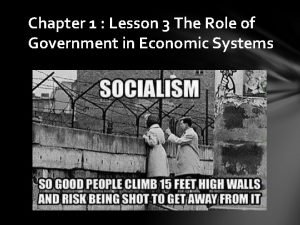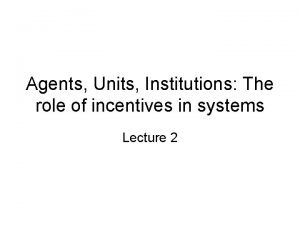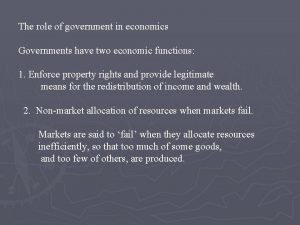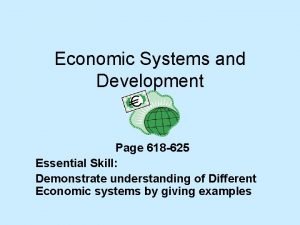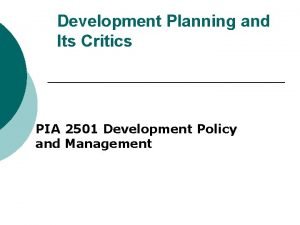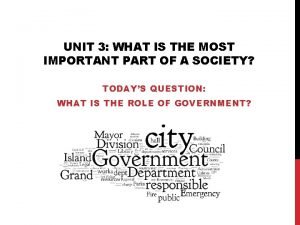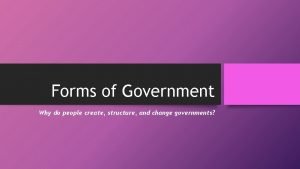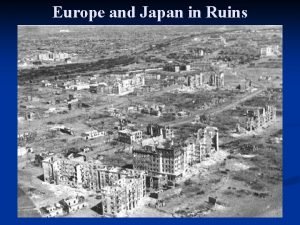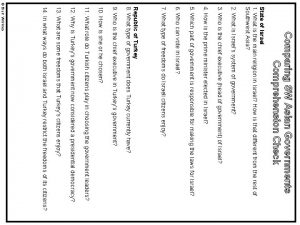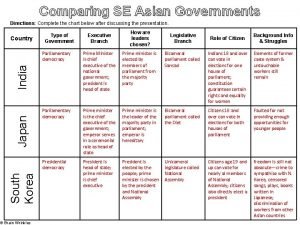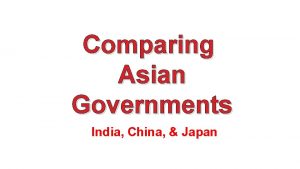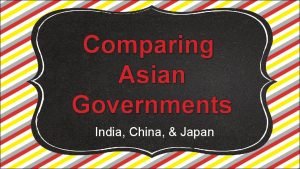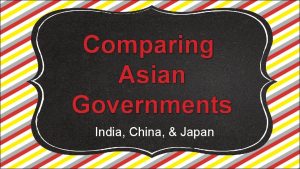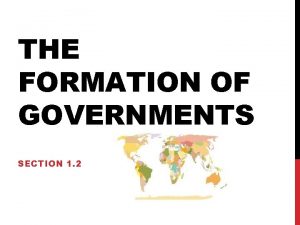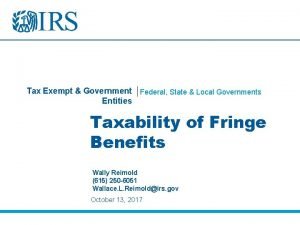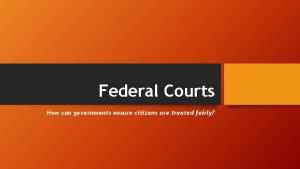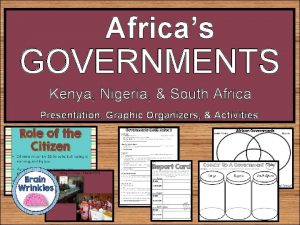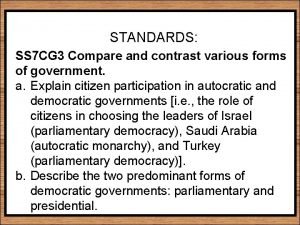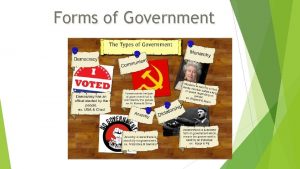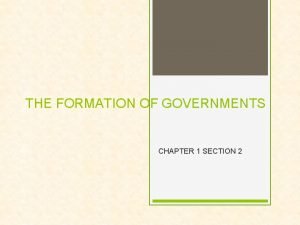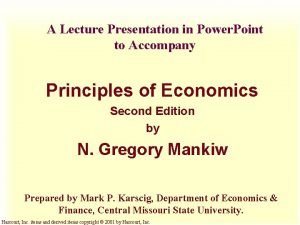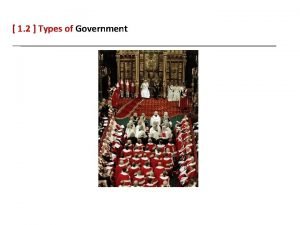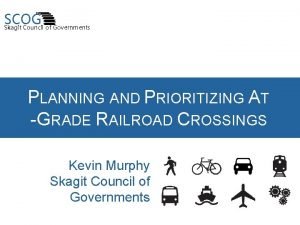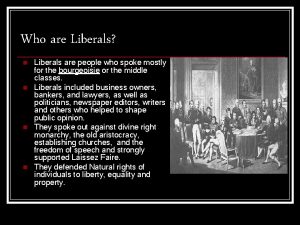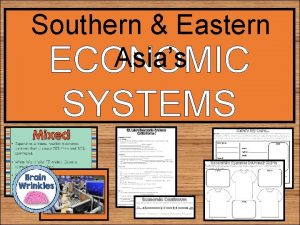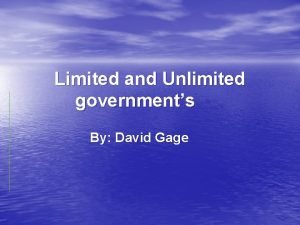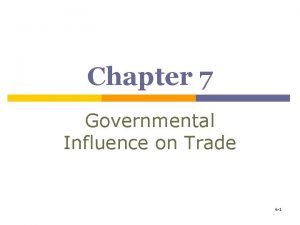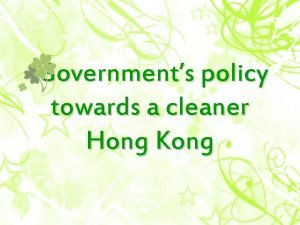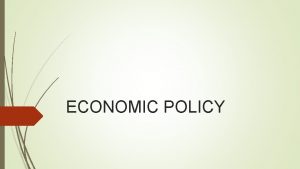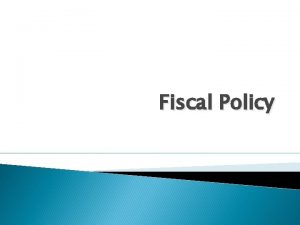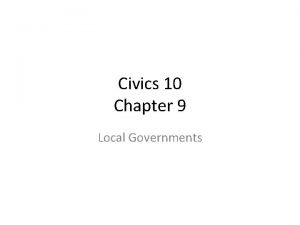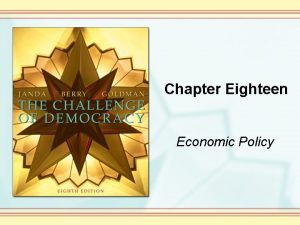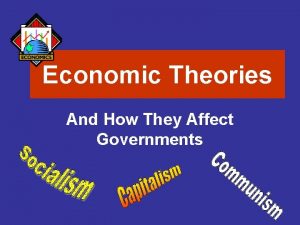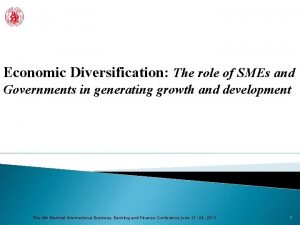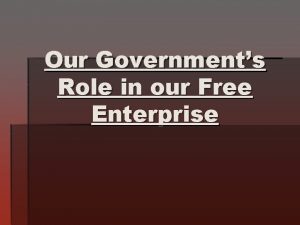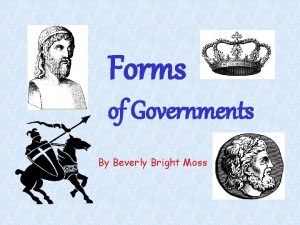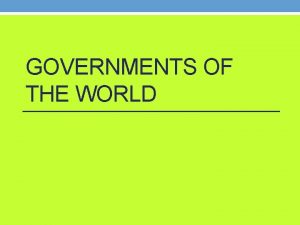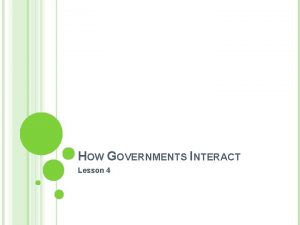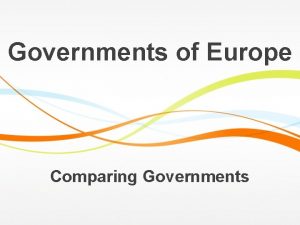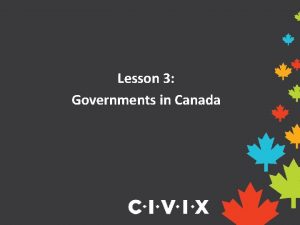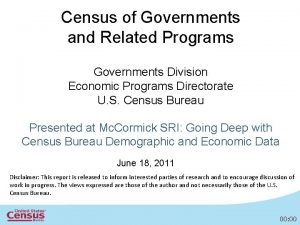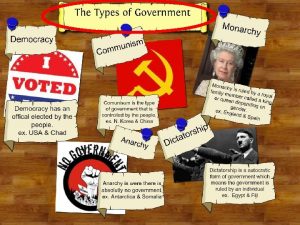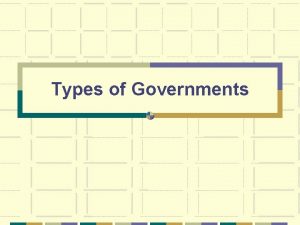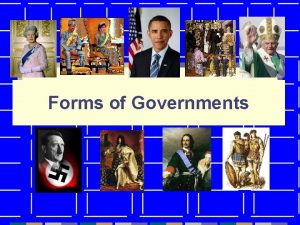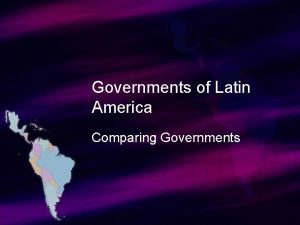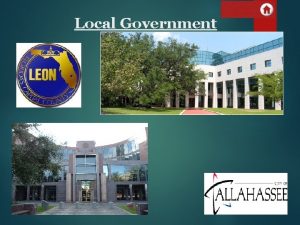Chapter 18 Economic Policy Governments role in the















































- Slides: 47

Chapter 18 Economic Policy

Government’s role in the economy TWO KEY QUESTIONS • HOW MUCH RESPONSIBILITY DOES THE GOVERNMENT HAVE TO KEEP OUR ECONOMY HEALTHY? • HOW MUCH POWER DOES THE GOVERNMENT HAVE TO KEEP THE ECONOMY HEALTHY? Copyright © 2011 Cengage

U. S. Government and the Economy: A Brief History The Framers of the Constitution wanted the government to have the power to: • promote free trade • protect patents, copyrights and trademarks • enforce contracts between individuals and businesses • build the infrastructure (roads, bridges, canals, etc. ) necessary to allow economic growth. Copyright © 2011 Cengage

U. S. Government and the Economy: A Brief History Constitutional provisions (Article I, Section 8) • Lay and collect taxes and duties. • Regulate interstate commerce. • Coin money and regulate its value. • Establish post offices and post roads. • “Promote science and useful arts” by issuing copyrights and patents. Copyright © 2011 Cengage

U. S. Government and the Economy: A Brief History • Until the late 19 th Century the U. S. the government had a laissez-faire policy with no government intervention. • The government moved to break up monopolies in the late 19 th Century. • The Great Depression resulted in a huge shift in thinking about the relationship between government and the economy. • Roosevelt’s New Deal saw the federal government take on responsibility for managing the economy. Copyright © 2011 Cengage

The Business Cycle • The peaks and troughs of the business cycle are normal but undesirable. • What can/should the government do to prevent highs and lows?

CARTER REAGAN BUSH 41 Copyright © 2011 Cengage CLINTON BUSH 43

Recession of 2007 -2009 • Obama becomes president • Congress passes stimulus On the edge of the abyss Recession begins

U. S. GDP growth 2008 -2012 Obama stimulus

Federal government deficit 1982 -2012 Copyright © 2011 Cengage

Economic Policy • The Great Depression was the biggest recession the U. S. has ever had. • Recession (def): A period of reduced production and increased unemployment. • Since the Depression, the government has tried two basic ways to avoid recessions and prevent inflation. Copyright © 2011 Cengage

Fiscal Policy • The government attempts to regulate the economy through taxing and spending. • The plan for taxing and spending is the federal budget. Copyright © 2011 Cengage

Fiscal Policy • John Maynard Keynes was a British economist who was most influential during the 1930 s. • Basic idea: The government assures the “right amount” of demand in the economy. • To stimulate the economy, the government should increase demand for goods and services by spending money on projects. • His theories are called Keynesian economics.

STIMULATING THE ECONOMY KEYNESIAN THEORY Economic downturn Government should take action (“Stimulus” spending) Increase in demand for all goods and services. Jobs created. John Maynard Keynes British Economist 1883 -1946

Fiscal Policy FDR’s New Deal was an application of Keynesian economics.

Fiscal Policy The Obama stimulus plan was a 21 st Century application of Keynesian theory.

Supply side economics • Relies more on market forces to stimulate economy. • Attempts to stimulate the economy by cutting taxes. • High tax rates slow economic growth. People and businesses work less, spend less, save less, invest less. • Cutting tax rates for the highest income earners is most important.

Supply side economics Tax cuts for the wealthy. The wealthy invest their disposable income. Businesses can expand, hire more workers, increase production. Economy begins to grow. More economic activity = more tax revenues.

Monetary Policy • The Federal Reserve is the “bank of banks. ” It is part of the federal government but is not controlled by the President or Congress. • The “Fed” controls the money supply by raising and lowering interest rates. • The “Fed” controls the money supply in order to avoid recession and inflation. Copyright © 2011 Cengage

Monetary Policy • The government tries to steer a course between recession and inflation by controlling interest rates, and thus the money supply. • When interest rates are lowered, people borrow more and banks lend more, the money supply increases and the economy is stimulated. • When interest rates are raised, the opposite happens. • Ideally, the money supply grows at the same rate as GDP. Copyright © 2011 Cengage

The Machinery of Economic Policy Making: The Executive Branch COUNCIL OF ECONOMIC ADVISORS (CEA) • Theoretically: three impartial professional economists chosen by the president. • Forecast economic trends, analyze economic issues, prepare President’s economic report for Congress. • Tend to favor reliance on market forces. Copyright © 2011 Cengage

The Machinery of Economic Policy Making: The Executive Branch OFFICE OF MANAGEMENT AND BUDGET (OMB) • Chief function: prepare spending estimates of federal departments and agencies. • Also: ensure that the legislative proposals for departments are in keeping with president’s policy programs. Copyright © 2011 Cengage

The Machinery of Economic Policy Making: The Executive Branch Jacob Lew SECRETARY OF THE TREASURY • Usually someone from the world of business of finance. • Expected to offer perspective of the private financial sector. • Provides estimates of federal tax revenues and predicts impact of changes in tax policy. Copyright © 2011 Cengage

The basic functions of the Department of the Treasury include: • Managing Federal finances • Collecting taxes, duties and monies due to the U. S. • Paying all bills of the U. S. government • Currency and coinage • Managing Government accounts and the public debt • Supervising national banks and thrift institutions • Advising the President and Congress on financial, monetary, economic, trade and tax policy • Enforcing Federal finance and tax laws • Investigating and prosecuting tax evaders, counterfeiters, and forgers

The Machinery of Economic Policy Making: The Fed • Board of Governors: Seven members appointed by president to 14 -year non-renewable terms. • Chairman serves four-year, renewable term. Ben Bernanke, Chairman of the Federal • Reserve, speaks to a congressional committee. • Professional economists or bankers. Independent of president and Congress. • Regulates economy by controlling the money supply (interest rates). Copyright © 2011 Cengage

The Machinery of Economic Policy Making: Congress • Most important player in economic policy making. • Approves all taxes and almost all spending. • Can alter powers of the Fed by passing laws. • Especially influential to economic policy: Ø Ø House and Senate Budget Committees House and Senate Appropriations Committees House Ways and Means Committee Senate Finance Committee

The Machinery of Economic Policy Making CONGRESS FEDERAL RESERVE PRESIDENT Why is it important that the Federal Reserve be independent of Congress and the President? Copyright © 2011 Cengage

The Budget: Vocabulary n n Budget – The government’s plan for raising and spending money. Fiscal Year – October 1 through the following September 30 (federal) Budget resolution – A congressional decision that states the maximum amount of money the government should spend Entitlements - A claim for government funds that cannot be changed without violating the rights of the claimant Copyright © 2011 Cengage

The Budget: Vocabulary n n n Mandatory spending – spending that is required under law. Examples: entitlement programs, veterans benefits, unemployment. Discretionary spending – spending that must be authorized each year. Examples: highway construction, federal court system, scientific research Appropriations – money set aside for specific purposes.

The Budget: Vocabulary n n Deficit spending – when the government spends more than it collects in revenues (in a given fiscal year). Federal debt – the total amount of money owed by the federal government.

Federal Income Tax Progressive tax: tax The higher the income and ability to pay, the higher the tax rate.

Figure 18. 5 Federal Taxes on Income, Top Percentage Rates 1913 -2002 Source: Updated from Congressional Quarterly Weekly Report (September 18, 1993), 2488. Copyright © 2011 Cengage

Figure 18. 4 Tax Burdens in Democratic Nations (Taxes as a Percentage of Income of a Family with Two Children) Source: Statistical Abstract of the United States, 2003, Table 1344. Copyright © 2011 Cengage

The Federal Budget Process n Process could be: 1. How much money will we have? 2. How can we divide that much money on the programs we need? n Instead, it is: 1. What programs do we need? 2. How do we get that much money?

The Federal Budget Process President gives instructions to agencies after consulting with OMB. Spring Agencies work on their budgets. Executive Action Summer OMB begins review of agency proposals. September OMB prepares final budget for president. December

The Federal Budget Process President submits budget proposal to Congress. January Congress adopts budget resolution. April Congressional Action Congress completes work on appropriations bills. September New fiscal year begins. October 1

FY 2015 Federal Budget n March 4: President Obama submits his budget to Congress. • • • $1 trillion in tax increases. Increase in spending on social programs. $0. 4 billion less for military spending vs. 2014. § April 1: House Budget Committee Chairman Paul Ryan unveils Republican plan. • • No tax increases. Cuts in social programs. Increase military spending. Repeals Affordable Care Act. § April 27: House defeats Obama budget -2. 413





Figure 18. 1 Federal Budget Deficit (or Surplus) Source: Budget of the U. S. Government, FY 2009 updated by OMB’s Mid-Session Review, July 2009 © 2003, AAAS. Reprinted with permission Copyright © 2011 Cengage

Figure 18. 1 Federal Budget Deficit

Public support for deficit reduction proposals

The Politics of Economic Prosperity n n Economic health creates majoritarian politics: everyone wants a healthy economy. Before an election, politicians worry about pocketbook issues (economic conditions) Lower income people worry about unemployment; higher income people worry about inflation. Voting behavior and economic conditions are strongly related. Voters care about the national economy. Copyright © 2011 Cengage

The Politics of Economic Prosperity n n Politicians are motivated to take short-term view of economic prosperity. Ideally, they want to create low unemployment and rising incomes before an election. Copyright © 2011 Cengage

The Politics of Economic Prosperity During the 1992 presidential race, Clinton campaign director James Carville posted this now famous sign in “the war room” to keep his staff focused on the most important issue.
 Karl marx definition
Karl marx definition Hitlers economic policy
Hitlers economic policy Economic policy
Economic policy What does holodomor mean
What does holodomor mean Economic growth vs economic development
Economic growth vs economic development What is economic growth and development
What is economic growth and development Lesson 2 our economic choices
Lesson 2 our economic choices Role of economic agents
Role of economic agents Lesson 3 the role of government in economic systems
Lesson 3 the role of government in economic systems Role of economic agents
Role of economic agents Economic role of government
Economic role of government Role of government in economic development
Role of government in economic development Role of state in economic development slideshare
Role of state in economic development slideshare Web role in azure
Web role in azure Symbolischer interaktionismus krappmann
Symbolischer interaktionismus krappmann Statuses and their related roles determine the structure
Statuses and their related roles determine the structure Different kind of governments
Different kind of governments Why do people create
Why do people create Note three provisions in japan’s new constitution.
Note three provisions in japan’s new constitution. Comparing sw asian governments comprehension check
Comparing sw asian governments comprehension check Comparing sw asian governments
Comparing sw asian governments Comparing asian governments
Comparing asian governments Comparing asian governments
Comparing asian governments Comparing asian governments
Comparing asian governments Centre region council of governments
Centre region council of governments Comparing african governments
Comparing african governments The formation of governments 1-2
The formation of governments 1-2 Are local governments tax exempt
Are local governments tax exempt Are city governments tax exempt
Are city governments tax exempt Comparing sw asia governments answers
Comparing sw asia governments answers How can governments ensure citizens are treated fairly
How can governments ensure citizens are treated fairly How do the governments of kenya and nigeria compare?
How do the governments of kenya and nigeria compare? Comparing sw asian governments
Comparing sw asian governments How are governments classified
How are governments classified The formation of governments 1-2
The formation of governments 1-2 Government can sometimes improve market outcomes
Government can sometimes improve market outcomes What are the three ways to classify governments
What are the three ways to classify governments Scog
Scog Liberals wanted governments to be based on
Liberals wanted governments to be based on Se asian economies comprehension check answer key
Se asian economies comprehension check answer key Is canada limited or unlimited government
Is canada limited or unlimited government Why do governments intervene in international trade
Why do governments intervene in international trade Hát kết hợp bộ gõ cơ thể
Hát kết hợp bộ gõ cơ thể Ng-html
Ng-html Bổ thể
Bổ thể Tỉ lệ cơ thể trẻ em
Tỉ lệ cơ thể trẻ em Gấu đi như thế nào
Gấu đi như thế nào Tư thế worm breton
Tư thế worm breton
